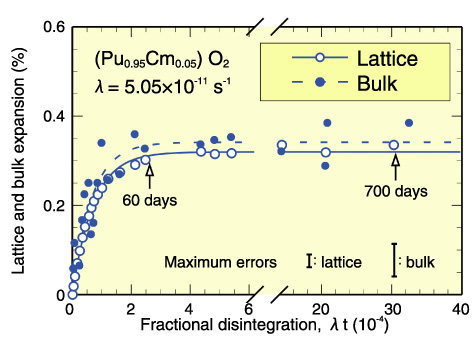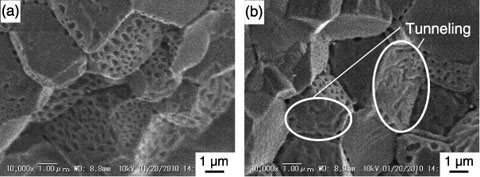
Fig.7-11 Lattice and bulk expansion at room temperature as a function of fractional disintegration

Fig.7-12 Thermal recovery of lattice and bulk as a function of annealing temperature

Fig.7-13 SEM images of the fracture surface of a (Pu, Cm)O2 pellet annealed at 1160 °C
We have been studying fundamental technologies for minor actinides (MAs) recycling based on the fast breeder reactor (FBR) and U-Pu mixed oxide fuel containing MAs (MA-MOX). In such fuel pellets, the accumulation of point defects and helium (He) induced by α-decay proceeds rapidly during fuel storage after fabrication, since the relatively short-lived nuclides represented by 238Pu, 241Am, and 244Cm are included. Lattice expansion due to self-irradiation damage is a well-known phenomenon. However, the bulk expansion of sintered pellets is not well understood. In addition, the accumulated He may be released as gas at high temperatures when the fuel is loaded into the reactor. Possible changes in the fuel-pellet microstructure should also be investigated.
In this work, a sintered specimen of (Pu, Cm)O2 containing 5 mol% Cm as the main helium source was prepared as a simplified form of MA-MOX pellet. The following experiments were performed to obtain the fundamental data concerning self-irradiation damage and He accumulation/release. Fig.7-11 shows the lattice and bulk expansion induced by the self-irradiation damage as a function of fractional disintegration (defined by the product of the decay constant and storage time). From the similar expansion curves, it is found that the main factor in bulk expansion is the lattice expansion due to point-defect accumulation.
After He accumulation corresponding to 0.3% disintegration ≈700 days), the thermal recovery of the lattice and bulk was compared in the temperature range up to 1160 °C; the results are shown in Fig.7-12. While the lattice parameter recovers to the value for the undamaged sample, the pellet exhibits swelling during annealing at 1160 °C. The fracture surface of the annealed pellet was observed by scanning electron microscopy (SEM) to confirm any change in the microstructure. The SEM images are shown in Fig.7-13. The traces of gas bubbles are closely distributed along the grain boundaries; these are very similar to the typical fission gas bubbles observed in high-burnup oxide fuel pellets. According to these experimental results, it is found that the helium gas swelling of an MA-MOX fuel pellet could occur at a very early stage of the burning. We will obtain quantitative data concerning the He behavior, e.g., the diffusion coefficient and the influence of He release on the pellet sintering process.
The present study was from the project “Development of common and fundamental technologies on the evaluation of nuclear fuel behavior for realizing MA recycling” entrusted by the Ministry of Education, Culture, Sports, Science and Technology of Japan (MEXT).